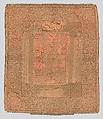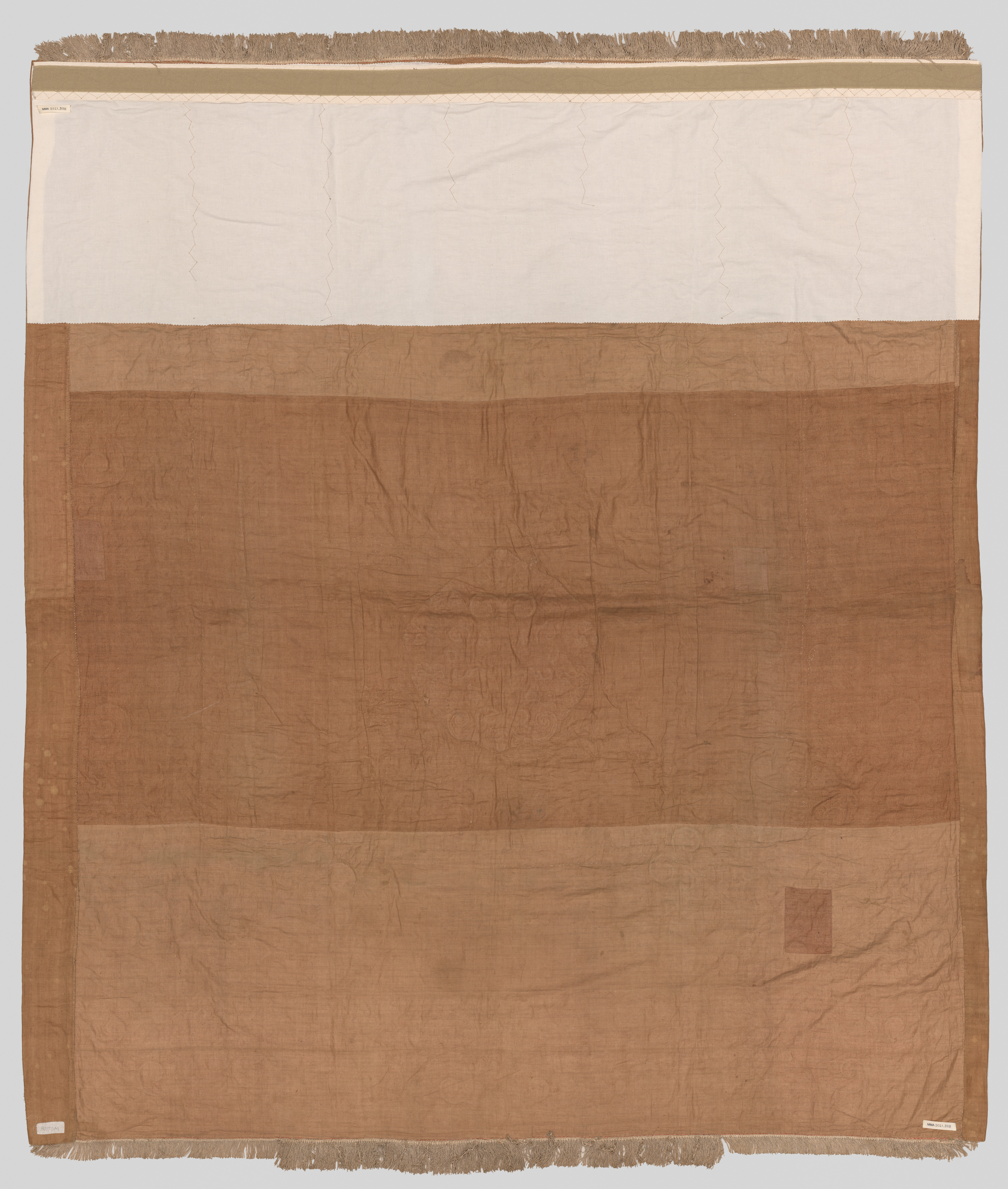Torah ark curtain
Not on view
Customary to Jewish practice, this Torah Ark Curtain was created by adapting and extending two existing treasured textiles, celebrating longevity and connectivity within its congregational community. The work is an amalgam of two initially autonomous pieces, multilayered and representing the workmanship of at least three different campaigns of creation. The large textile was originally created as an ornate, extremely finely worked secular hanging, probably a bed or table covering: its broad outer border is decorated with linen cutwork embroidery in delicate floral motifs, with floral and arabesque dart detailing at the corners, and a fine, knotted fringe. Sometime in the early eighteenth century, a splendid smaller textile, also decorated with embroidery, was added, sewn in place over the center of the large ornamental cloth: with this action, the textiles were converted to function as a Torah Ark Curtain, the most exulted textile within the synagogue.
The smaller textile at the heart of this assemblage is the size and scale of a Reader’s Desk Cover, which suggests that it was originally made to ornament the desk in a synagogue on which the Torah scrolls would be unfurled and read. An inscription in Hebrew identifies the patron- unusually, a woman- and the date: “In honor of God, and in honor of the Torah, Giuditta, wife of- my husband, my master- Azariah [Bonaiuto] me-Adumin [de’ Rossi]-may God our stronghold, bless us and guard us- in the year [5]446 [1686]”. The de’ Rossi family had long-standing roots in Renaissance Mantua- an earlier Azariah was a published scholar of great renown; Salamone, one generation older than Giuditta’s husband, a celebrated musician and composer at the court of successive dukes of Mantua. Azariah de’ Rossi, husband to Giuditta, donor of the Reader’s Desk Cover, was apparently an exceedingly successful merchant, one of the most affluent of the Jewish community at his death in 1695.
This image cannot be enlarged, viewed at full screen, or downloaded.
This artwork is meant to be viewed from right to left. Scroll left to view more.



